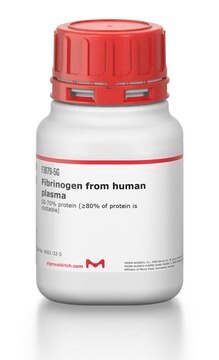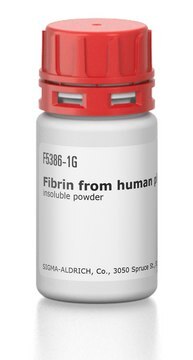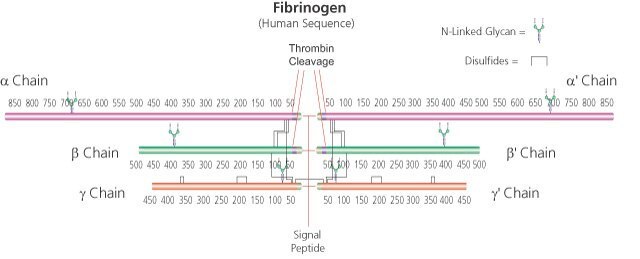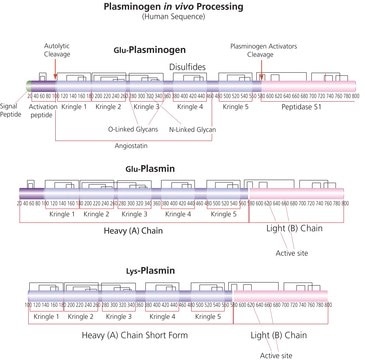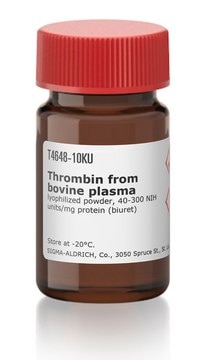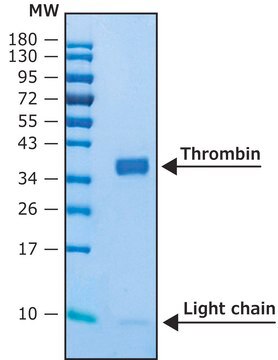F4883
Fibrinogen from human plasma
35-65% protein (≥90% of protein is clottable).
Synonym(s):
Factor I
About This Item
Recommended Products
biological source
human plasma
Quality Level
description
essentially plasmin(ogen) free
form
powder
quality
35-65% protein (≥90% of protein is clottable).
mol wt
α-chain 63.5 kDa
β-chain 56 kDa
γ chain 47 kDa (about 4% carbohydrate content)
soluble dimer 340 kDa
concentration
35-65% protein (biuret)
technique(s)
cell culture | mammalian: suitable
solubility
0.9% NaCl: soluble
storage temp.
−20°C
Looking for similar products? Visit Product Comparison Guide
General description
Application
- fibrinogen adsorption assay performed on swCNTs (single-walled carbon nanotubes)
- the characterization of fibrinogen structure in the presence of CNT using CD (Circular dichroism) spectroscopy and temperature scan
- the preparation of RBC suspension obtained from venous blood of antecubital vein, to assess RBC aggregability
- fibrinolysis assay performed on mouse embryonic fibroblasts (MEFs)
- the preparation of fibrinogen-labeled gold (Fgn/Au)
- the quantification of in vitro angiogenesis by human microvascular endothelial cells and
- the assessment of fibrin-induced apoptosis and differentiation-regulation in trophoblast obtained from term human placentas.
Biochem/physiol Actions
Specifications
Physical form
Analysis Note
Disclaimer
Storage Class
11 - Combustible Solids
wgk_germany
WGK 3
flash_point_f
Not applicable
flash_point_c
Not applicable
ppe
Eyeshields, Gloves, type N95 (US)
Certificates of Analysis (COA)
Search for Certificates of Analysis (COA) by entering the products Lot/Batch Number. Lot and Batch Numbers can be found on a product’s label following the words ‘Lot’ or ‘Batch’.
Already Own This Product?
Find documentation for the products that you have recently purchased in the Document Library.
Customers Also Viewed
Our team of scientists has experience in all areas of research including Life Science, Material Science, Chemical Synthesis, Chromatography, Analytical and many others.
Contact Technical Service